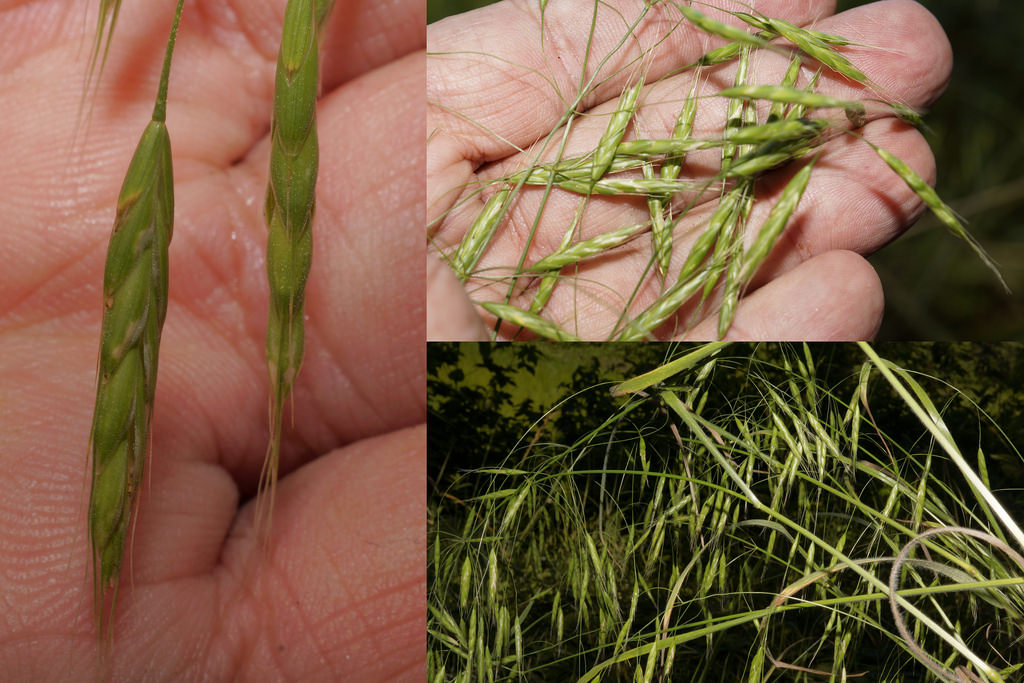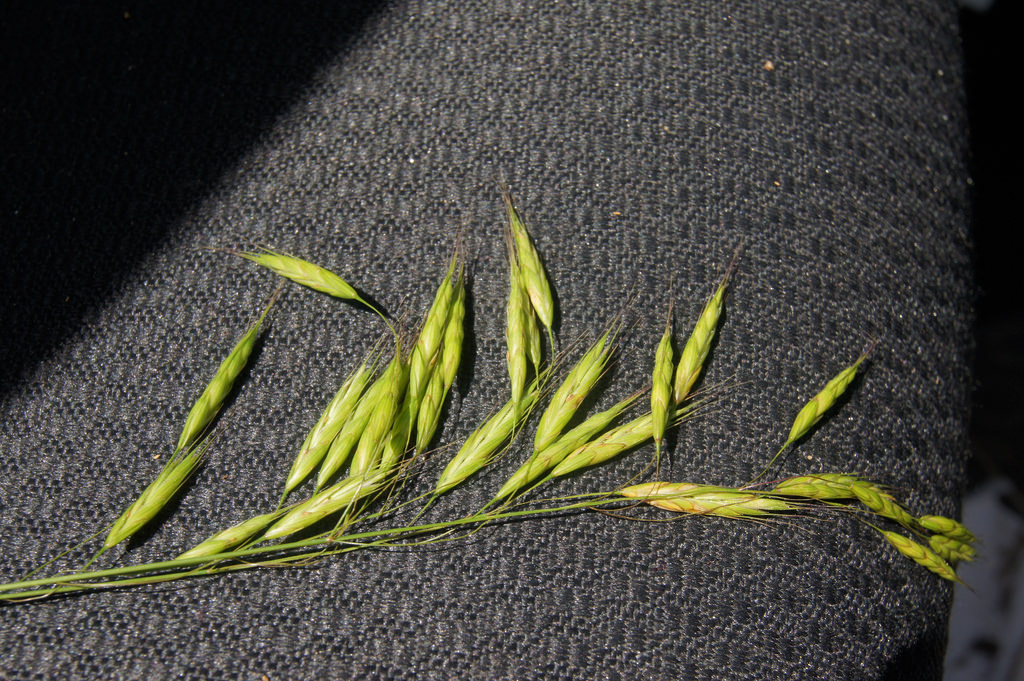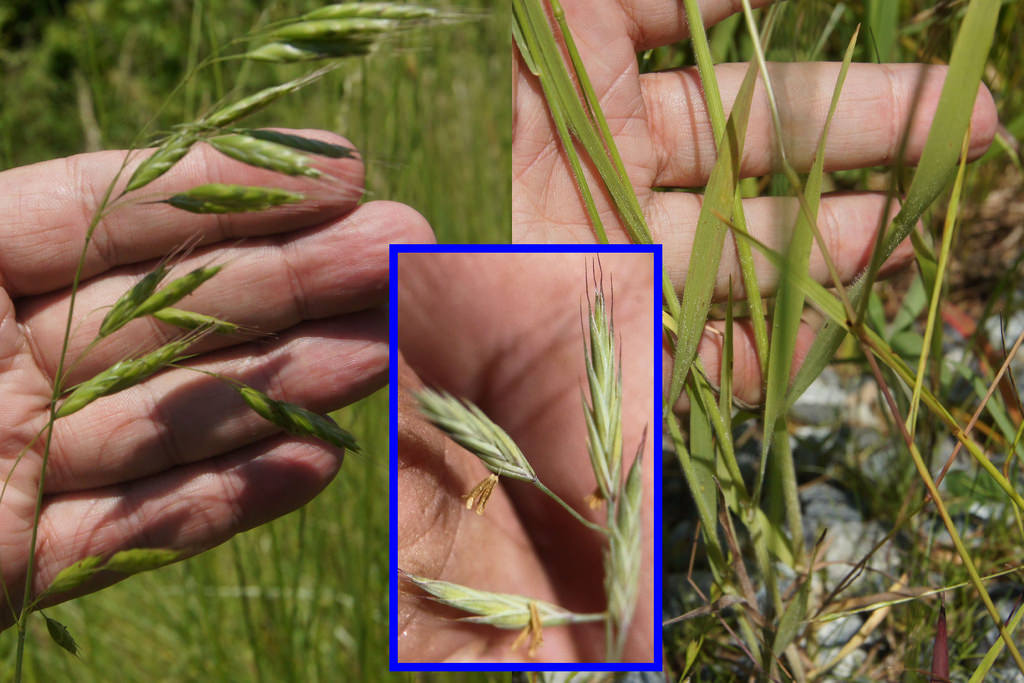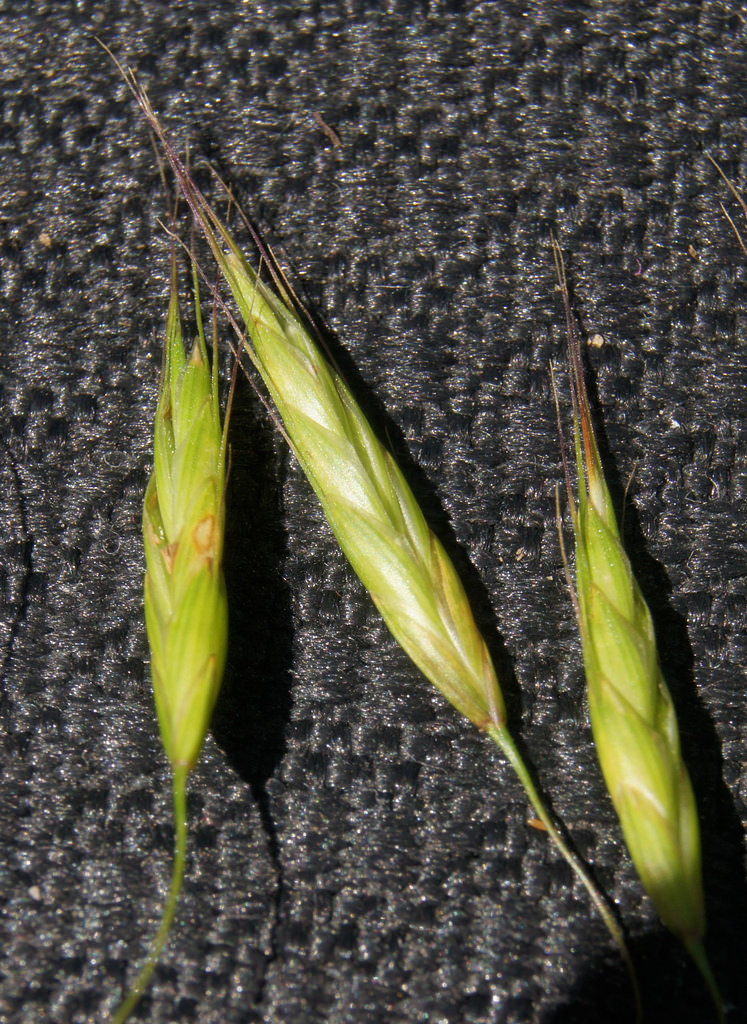Map Snapshot




















49 Records
Status
A common and widespread non-native (Terrell & Peterson, 2009).
Seasonality Snapshot
Source: Wikipedia
This article's factual accuracy is disputed. (July 2023) |
| Bromus commutatus | |||
|---|---|---|---|
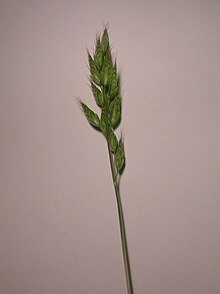
| |||
A panicle of Bromus commutatus
| |||
| Scientific classification | |||
| Kingdom: | Plantae | ||
| Clade: | Tracheophytes | ||
| Clade: | Angiosperms | ||
| Clade: | Monocots | ||
| Clade: | Commelinids | ||
| Order: | Poales | ||
| Family: | Poaceae | ||
| Subfamily: | Pooideae | ||
| Genus: | Bromus | ||
| Species: | B. commutatus
| ||
| Binomial name | |||
| Bromus commutatus Schrad.
| |||
| Synonyms[1] | |||
| |||
Bromus commutatus, the meadow brome,[2] is an annual or biennial[3] species of plant in the grass family Poaceae. In the United States it is known as hairy chess.
Description
[edit]The height ranges from 40 to 120 cm (47 in). The panicle is 7–20 cm, usually nodding and often spreading,[4] but erect as first.[5] The leaf-sheaths are hairy, the upper are usually hairless.[5] B. commutatus is stouter than B. racemosus, the smooth brome, with a flower-head not drooping to one side and a broader elongated branched flower head.[6]
Meadow brome structure
[edit]-
Node structure
-
Panicle detail
-
Spikelets detail
Habitat and distribution
[edit]It is found in meadows, wasteground, road verges, hayfields and rough grassland.[7] Found throughout the United Kingdom, it is common in England on the moist soils of water meadows; it is rare in Scotland, Ireland and Wales.[3] It is found naturally throughout Europe, N. Africa, W. Asia. It has been introduced into North America and in the United States is known as 'Hairy Chess'. The flowering period is from May to July.[3]
Crop value
[edit]
The species has no fodder value in the United Kingdom and is regarded as a weed. The attractive inflorescences may be used, either fresh or dry, in flower arrangements.[3]
Varieties
[edit]Bromus commutatus var. pubens Wats has spikelets which are not hairless, having soft hairs.[3]
References
[edit]Notes
[edit]- ^ synonyms. Accessed : 01-06-10 Archived August 14, 2012, at the Wayback Machine
- ^ BSBI List 2007 (xls). Botanical Society of Britain and Ireland. Archived from the original (xls) on 2015-06-26. Retrieved 2014-10-17.
- ^ a b c d e Hubbard, Page 85
- ^ Clapham, Page 460
- ^ a b Fitter, Page 74
- ^ McLintock, Page 277
- ^ Philips, Page 72
Sources
[edit]- Clapham, A. R., Tutin, T. G. & Warburg, E. F. (1987). Excursion Flora of the British Isles. Cambridge : Cambridge University Press. ISBN 0-521-23290-2.
- Fitter, R., Fitter, A. and Farrer, A. (1984). Collins Guide to the Grasses, Sedges, Rushes, and Ferns. London : Collins. ISBN 0-00-219136-9.
- Hubbard, C. E. (1992). Grasses. Harmondsworth : Penguin Books. ISBN 978-0-14-013227-4
- McLintock, D. and Fitter, R. S. R. (1982). The Pocket Guide to Wild Flowers. London : Collins. ISBN 0-00-219363-9.
- Phillips, Roger (1980). Grasses, Ferns, Mosses, & Lichens London : Book Club Associates.
